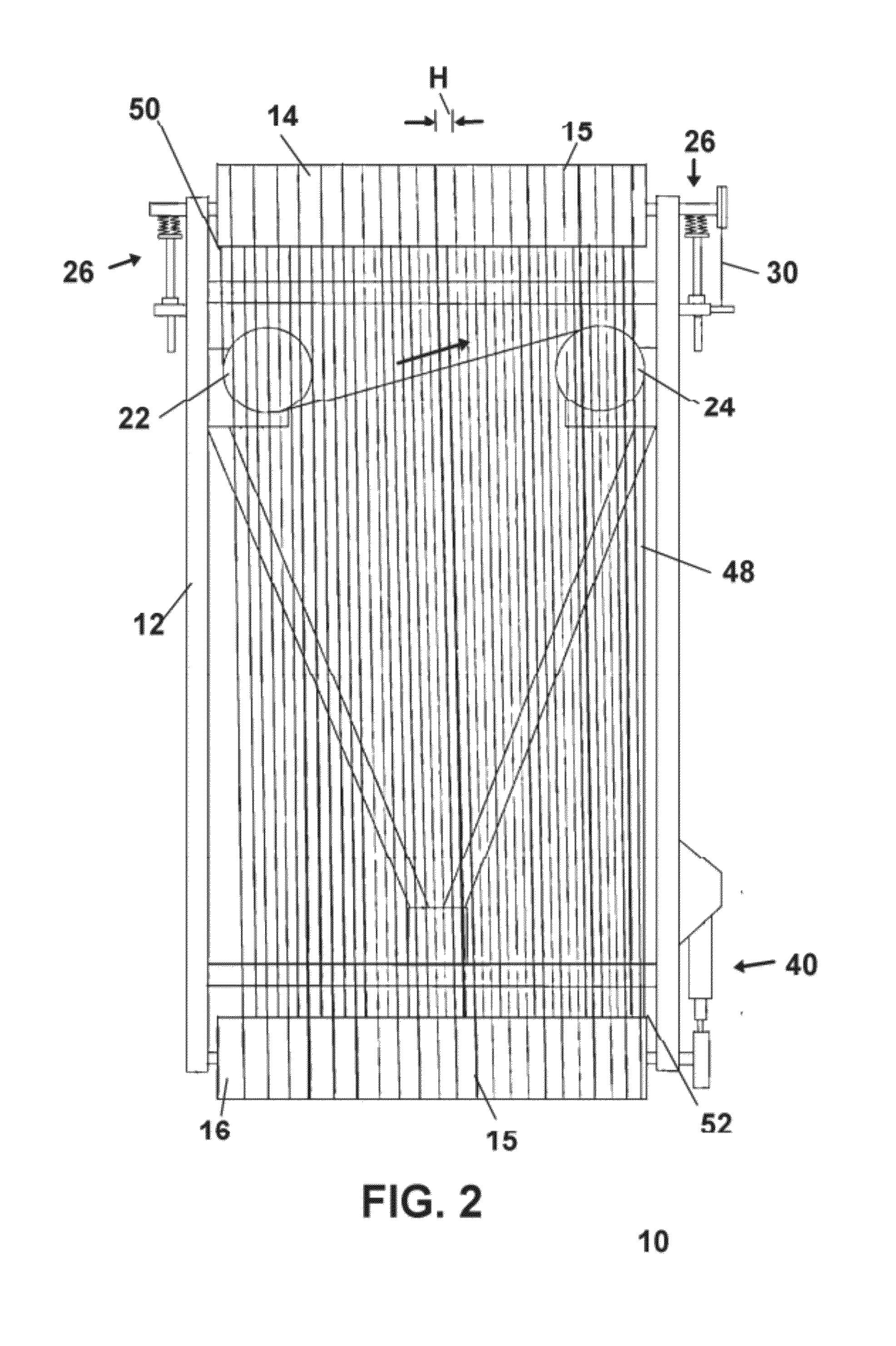Continuous-Wire Transport Conveyor for Food Dehydration
- Summary
- Abstract
- Description
- Claims
- Application Information
AI Technical Summary
Benefits of technology
Problems solved by technology
Method used
Image
Examples
Embodiment Construction
[0038]Now referring to drawings in FIGS. 1-6, wherein similar components are identified by like reference numerals, there is seen in FIG. 1 a top view of the frame 12 of the device 10 where the single strand of wire 48 forming the conveyor surface is removed for clarity. It should be noted that the use of the word “wire” is to mean any single strand or multi-strand metal or textile thread, cable, or wire, capable of tensioned engagement in the device 10 herein and in no manner should it be limiting.
[0039]First rotating drum 14 and second rotating drum 16 rotating drums are rotatably engaged to the frame 12 at axles 17 and 19 respectively. Means to register and maintain the positions and spacing of the wire around the drums are shown as guide grooves 15 formed into the surface of the drums 14,16. However, it is envisioned that other means to maintain the spacing of the wires during ingress and egress from the drums 14 and 16, can be employed, such as a grooved bar inline with the inc...
PUM
 Login to View More
Login to View More Abstract
Description
Claims
Application Information
 Login to View More
Login to View More - R&D
- Intellectual Property
- Life Sciences
- Materials
- Tech Scout
- Unparalleled Data Quality
- Higher Quality Content
- 60% Fewer Hallucinations
Browse by: Latest US Patents, China's latest patents, Technical Efficacy Thesaurus, Application Domain, Technology Topic, Popular Technical Reports.
© 2025 PatSnap. All rights reserved.Legal|Privacy policy|Modern Slavery Act Transparency Statement|Sitemap|About US| Contact US: help@patsnap.com



